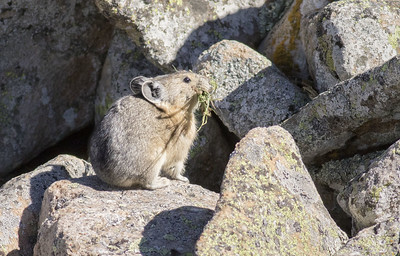
By Chick Keller
With the advent of human caused climate change, there has been much speculation about what will happen in the Southwest. Will there be droughts that will change our environment? Are there already signs?
New Mexico is geographically situated in a curious position. Many winter storms come from the northwest, but turn east just north of our state. This is because of the location of the jet stream, which has come south and moves north and south in a weekly rhythm. However, there are times when the moisture comes from the southwest and we get large snowstorms. In summer the jet stream retreats north to Canada, so no west-to-east traveling storms happen. Instead, the timing of the start of our moisture-giving “monsoon” season is dependent on a particular setup of high and low pressure systems. These are in turn dependent upon what is happening in the Pacific Ocean.
There are two major cycles in the ocean: the 20 – 30 year (variable) Pacific Decadal Cycle, and the shorter, 5 – 10 year El Niño/La Niña cycles called “El Niño Southern Oscillation — ENSO.” The Pacific decadal cycles are felt in the Southwest as alternating wet and dry decades. The ENSO alternates warm and cold water in the Eastern Equatorial Pacific off the coast of Peru. When warm (El Niño), the Southwest gets lots of moisture both in winter and summer. When cold (La Niña), it becomes dry. So during the dry phase of the Pacific cycle, if there is a La Niña, it gets really dry in New Mexico.
Global climate change has an additional effect. During the summer monsoon season there is a high pressure region that sits still over Oklahoma and a corresponding low pressure region over Nevada. These cause moisture air to be drawn up from the Gulf of California and nearby Pacific Ocean and also from the Gulf of Mexico. Global warming often reverses these systems — high over Nevada and low over Oklahoma. These both block moist air from the Pacific and the Gulf of Mexico, and the monsoon is delayed. In recent years, this has been happening more often and our monsoon rains have come later and produced less than normal moisture.
This area has been the scene of culture-changing droughts in the past, particularly the migration-causing 12th century drought that emptied out Chaco Canyon and the cliff dwellings of Mesa Verde, and established the native cultures along the Rio Grande.
Most computer simulations and climatologists suggest that warmer temperatures will result in more droughts and more drying of soils. It would be as if the deserts of Mexico migrated north. To counteract this, more precipitation would be needed. This might actually happen, because warmer air holds more moisture and so our monsoons might actually bring more rain. The downside is that it will probably come in more intense storms and much of it will run off into the flooded streams and so be lost to the land.

But the warming might cause other climate changes over the Pacific that would counter this. For now the prediction is for a drier climate on the Pajarito Plateau.
A note about signs of climate change. There has been little observed change in our native plants, but the growing season seems to have come earlier by one to two weeks. Some southern birds have drifted north. The Acorn Woodpecker was unknown here until the 1980s, but is common now. There are concerns that warming conditions might exterminate the American Pika from high-elevation places like the Jemez Mountains.
Various community science and volunteer-led efforts can help us track how climate change is impacting our local flora and fauna. For instance, PEEC volunteer Craig Martin personally records early and late wildflower sightings; eBird tracks time distribution for bird species in the county (and around the world!); and other community science efforts like Butterflies and Moths of North America, iNaturalist, and Journey North are used by both enthusiasts and scientists to gather data on the sightings of various plants and animals.
You can help our community better understand how climate change is impacting our local species by learning to use and contributing sightings on one or more of these platforms. Be sure to also check out PEEC’s interest groups if you’d like to join in the local conversation that is happening within our community about plants, birds, butterflies, and more.
